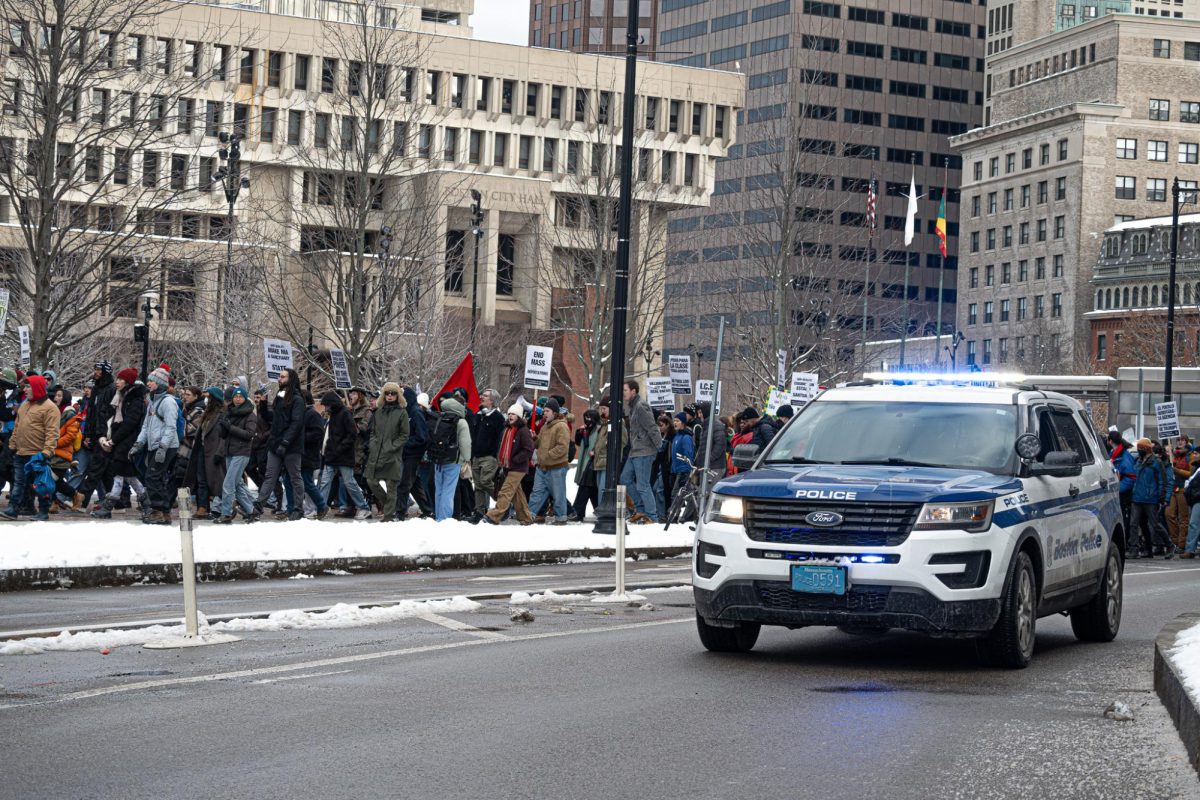Gov. Maura Healey announced March 27 that Phillip Eng, the former director of the Long Island Rail Road, would assume the role of MBTA general manager beginning April 10, according to the Boston Globe.
The announcement signals the beginning of a new era for the T, pointing to Eng’s past accomplishments in over 40 years of public transportation experience.
“Phil Eng is the proven leader the MBTA needs to improve safety and reliability across the system and restore the public’s trust,” said Healey in a statement. “He understands that a functioning transportation system is essential to a functioning economy, and he has a track record of taking the reins of struggling public transit systems and dramatically improving service. He also takes a collaborative approach to his work and maintains open lines of communication with customers, workers, businesses, local officials and communities.”
Following a press conference at the Riverside station, Eng and Transportation Secretary Gina Fiandaca rode the Green line to Park Street, where they greeted riders and the press before walking to the MBTA Operations Control Center.
Eng said he intends to take the T to and from work once he assumes the position, which he also did in his role as director of the LIRR.
“I’m looking forward for the riders to come up and chat with me. I did that throughout my career, I think it’s important for them to know that someone is listening,” said Eng.
Since the beginning of 2023 many incidents involving the MBTA, including a ceiling tile falling in Harvard station and narrowly missing Suffolk University senior Cianna Navarro and trains disabling on the tracks, have caused cries for change from people across the Bay State.
For many Suffolk students, the MBTA is a vital resource for navigating Boston and surrounding areas. They rely on the T to get to and from school, work or extracurricular activities and said the inconsistent transparency from the T about speed restrictions, delays and shutdowns has been frustrating.
Amanda Long, a senior marketing major who lives off the Blue line in East Boston, said the speed restrictions increased her commute to downtown, noting that the trains are slower and not coming as frequently, causing her to wait for over 20 minutes in a station for the next train to Government Center.
“It’s incredibly frustrating. Because of where our school is located, a lot of students can’t afford to live in this exact area, so a lot of us have to commute from areas that are more in our price range,” Long said.
The MBTA announced via its Twitter account that speed restrictions of 10-25 mph would be implemented across all Red, Orange, Green and Blue line trains “until we could validate that all repairs are in place and verify that speeds are appropriate for those track sections,” on March 10 following a site visit by the Department of Public Utilities, which oversees the organization.
This announcement was met with criticism from the Boston community, particularly from commuters who rely on the T to get to work. The global speed restrictions increased commute times by an average of 20 minutes, according to MBTA interim general manager Jeff Gonneville.
While global speed restrictions were lifted for the Red, Orange, and Blue lines on March 10, “block speed restrictions” in areas where tracks needed further evaluation have remained in place, according to the MBTA on Twitter. Global speed restrictions on the Green line were lifted March 19.
The MBTA provided a guide to alternative routes riders can take using the Commuter Rail on their Twitter March 26. Riders can show their CharlieCard or CharlieTicket to conductors to utilize the Commuter Rail during service changes for the Red, Orange and Green lines.
Long noticed that other Suffolk students have felt the effects of the T’s slow service with people arriving late to class more frequently. Thankfully, she said, professors have been compassionate about students dealing with the T.
The MBTA launched a slow zone dashboard for riders to track slow zone updates on March 23, according to the Boston Globe. The dashboard updates each morning with information from the previous day before service begins, according to the website.
As of March 27, 27% of the T’s tracks have speed restrictions in place, amounting to 222 restrictions across all lines. The Red line has 107 restrictions which take up 26% of the line, while the Blue line has 10 restrictions which take up 77% of the line.
Long said the T should increase transparency and communication with riders about delays and speed restrictions, including giving riders advanced notice of shutdowns.
“Part of my morning routine should not be checking the MBTA Twitter to see what line is going to be down,” she said.
Jair Ayalas, a senior political science major who lives off the Orange line and commutes every day to campus or one of his two jobs downtown, said restrictions and delays have made his commute more difficult to navigate.
“Sometimes it makes me want to buy a car, but I can’t afford a car,” Ayalas said about the inconsistent and “uncomfortable” T rides he endures.
He said while the new Orange line trains have improved his commute in regards to cleanliness, delays in rolling out the new trains have not alleviated issues with the efficiency that the new cars were intended to fix. Ayalas added that the MBTA did not show a commitment to quickly improving safety regulations for the T.
“I think had it not been for a federal agency coming in and being like ‘Hey, these trains need to be replaced,’ they wouldn’t replace them until a serious accident happened. Even when serious accidents did happen, these trains were still running. I think it’s quite a shame,” he said.
The MBTA encouraged riders to sign up for alerts on its website for up-to-date notifications about speed restrictions and delays.




















